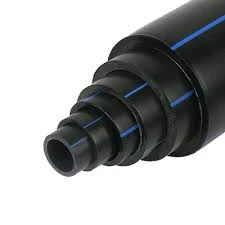دېكابىر . 12, 2024 00:59 Back to list
dwc hdpe pipe
Understanding DWC HDPE Pipe A Comprehensive Overview
In the realm of modern engineering and infrastructure development, various materials and technologies have gained significant traction. One such advancement is the Double Wall Corrugated (DWC) High-Density Polyethylene (HDPE) pipe, a popular choice for various applications across multiple industries. As its name suggests, DWC HDPE pipes consist of two walls the outer wall features corrugations for added strength and durability, while the smooth inner wall ensures efficient fluid flow. This article explores the characteristics, advantages, applications, and installation considerations of DWC HDPE pipes.
Characteristics of DWC HDPE Pipe
DWC HDPE pipes are manufactured from high-density polyethylene, a thermoplastic known for its robustness and resistance to various chemicals. The double-wall structure enhances the pipe's durability, allowing it to withstand various physical stresses, including soil pressure and hydraulic loads. The corrugated exterior provides excellent resistance to external environmental conditions, while the smooth interior wall reduces friction during fluid transport, enhancing flow efficiency.
Another essential feature of DWC HDPE pipes is their lightweight nature. Compared to traditional materials like concrete or steel, HDPE pipes offer significant weight savings, making transportation and installation easier and more cost-effective. Additionally, these pipes are resistant to corrosion and have a long service life, often exceeding 50 years under proper conditions.
Advantages of DWC HDPE Pipe
One of the most notable advantages of DWC HDPE pipes is their flexibility. The modular nature of these pipes allows for easy adjustments and configurations during installation, accommodating various project requirements without significant modifications. Moreover, their flexibility helps in absorbing ground movements, reducing the likelihood of damage in seismic areas or regions prone to soil settlement.
DWC HDPE pipes are also environmentally friendly. They are fully recyclable and can be manufactured using recycled materials, reducing the overall carbon footprint. Furthermore, their leak-proof design minimizes the risk of groundwater contamination, making them an ideal choice for projects aimed at preserving environmental integrity.
Cost efficiency is another major benefit of these pipes. Although the initial purchase price may be comparable to or even higher than traditional materials, the long-term savings in maintenance, installation, and operation costs make DWC HDPE pipes a cost-effective solution. Their longevity, coupled with reduced installation times due to their lightweight nature, contributes to overall project savings.
dwc hdpe pipe

Applications of DWC HDPE Pipe
The versatile nature of DWC HDPE pipes makes them suitable for a wide range of applications. They are commonly used in
1. Drainage Systems Their corrugated design allows for efficient drainage in stormwater management systems, reducing the risk of flooding. 2. Sewer Systems DWC HDPE pipes are widely employed in wastewater collection and treatment systems due to their resistance to corrosion and chemicals. 3. Telecommunication Cables The interior space can be utilized to house telecommunication cables, offering protection against environmental impacts. 4. Irrigation Systems Many agricultural applications benefit from DWC HDPE pipes for efficient water delivery, ensuring crops receive adequate hydration.
Installation Considerations
When considering the installation of DWC HDPE pipes, proper planning is crucial. Factors such as soil type, moisture levels, and depth of burial can all influence the performance and lifespan of the pipe. It is essential to follow industry guidelines and specifications to ensure that the pipes are installed correctly.
Additionally, specialized equipment may be required for cutting and joining DWC HDPE pipes. While traditional methods involve welding or adhesive bonding, modern installation techniques utilize electrofusion and butt fusion methods to create seamless joints, enhancing the reliability of the pipeline system.
Conclusion
DWC HDPE pipes represent a significant advancement in piping technology, offering a combination of strength, flexibility, and environmental sustainability. Their numerous advantages, coupled with a wide range of applications, make them an excellent choice for various engineering projects. As industries continue to seek innovative solutions to meet the demands of infrastructure development, DWC HDPE pipes are poised to play a pivotal role in shaping the future of pipeline systems. With proper installation and maintenance, these pipes can serve communities effectively for decades, ensuring safe and efficient fluid transport.
-
Premium HDPE Water Supply Pipes: Durable & Leak-Proof
NewsAug.03,2025
-
Premium PVC-M Water Supply Pipe - Durable & Efficient
NewsAug.02,2025
-
Premium PP Welding Rod: GPT-4 Turbo Enhanced
NewsAug.01,2025
-
HDPE Drainage & Irrigation Pipe - Durable, Efficient Solutions
NewsAug.01,2025
-
Premium PVC Transparent Pipe: Durable & Clear Solutions
NewsJul.31,2025
-
High-Quality UPVC Electrical Pipe for Safe Wiring Solutions
NewsJul.30,2025

